Need some ways to remind your students that bullying is not OK under any circumstances? Whether you’re prepping for National Bullying Prevention Month (it’s held in October each year), or you’ve noticed some disturbing behavior by a few individuals in the classroom, there is a whole lot of evidence out there that teachers can and do have a real impact when it comes to stopping bullies.
It’s not the most glamorous part of the job, we know. But consider this: A study released in 2019 found that it was more likely that aggressive behavior would increase if teachers ignored the bullying behavior or somehow trivialized it. They found that students actually interpret teachers’ lack of intervention as an implicit acceptance of bullying. On the other hand, when teachers take an active anti-bullying role in the classroom, the researchers found students were more likely to respond and reduce the poor treatment of classmates.
So how do you face bullying head-on in your classroom?
The teachers of Teach Starter know you’ve got a lot going on already, so we’ve built this guide to fighting bullying in your classroom, whether it’s in October or any other time throughout the year. Read on for a look at National Bullying Prevention Month, plus anti-bullying activities that you can use in an elementary or middle school classroom to make it clear you do not accept cruelty toward classmates (or anyone else, for that matter!).
What Is National Bullying Prevention Month?
Also called National Bullying Awareness Month, this nationwide anti-bullying campaign has been marked each October since 2006 — ever since it was founded by PACER’s National Bullying Prevention Center. Americans are called on to talk about the national problem of bullying and its effects and come together for Unity Day, held the 3rd Wednesday of October each year, by wearing and sharing the color orange.
So, how big is the problem of bullying anyway? Research is ongoing, but data from the National Bullying Prevention Center indicates:
- Forty-one percent of students who have been bullied at school think it will happen again.
- Bullying at school is most likely to occur in the school hallway or stairwell, followed by in the classroom.
- As much as 42 percent of bullying incidents reported by students happened in the classroom.
- School-based bullying programs work — they reduce the incidents by 25 percent.
Anti-Bullying Activity Ideas for Kids
Explain What It Means to Be a Bully
There’s a difference between what it means to be mean to another person and bullying — one that can be hard to parse when you’re a kid. It’s worth sitting down with your class to discuss the different levels and why none of them are OK.
Try this kid-friendly way of explaining what bullying means: Bullying is when someone repeatedly hurts, threatens, or makes fun of another person. It can be physical — like hitting or pushing —or emotional — like teasing or spreading rumors.
This is a short one-minute animated video that is perfect for the younger kids and introduces the term “bullying” to young children. It reminds them it’s important to remember that bullying is not okay and everyone deserves to be treated with kindness and respect.
This next video is a great one for the older kids. Elvis, the student, narrates a video explaining exactly what behavior qualifies as bullying and discusses the difference between conflict and bullying.
Create Anti-Bullying Posters
Creating posters to stand up for a cause you believe in is an age-old practice, and it is a great way for students to practice their power of sharing persuasive messages in a creative way. Challenge each student — or small groups — to create posters with anti-bullying messages that can be hung up around the school to remind schoolmates to be a little kinder to one another.
You might want to introduce this anti-bullying activity with a look at how posters have been used in activism campaigns in the past — from persuasive World War II era posters designed to encourage men to sign up for the US Army to those that called on women to join the labor force to help their country.
Try the Wrinkled Heart Activity
The Wrinkled Heart Activity is a simple but effective way to show how bullying and hurtful words can cause irreversible damage. Just like a human heart, once a paper heart has been wrinkled, it’s almost impossible to return it to its flat and smooth original state. This provides a great visual representation to teach students that they can’t take back the mean things they might say to a classmate.
All you’ll need for this activity is a copy of our free heart template and different colored pieces of paper.
Instructions:
- Print a copy of the heart template on the different colored papers — one each for the students in your class.
- Write the following on your whiteboard: “Before you speak, think and be smart. It’s hard to fix a wrinkled heart!”
- Ask students to share what they think the saying means.
- Direct each student to create a small ball with their heart template, and then ask them to smooth it out.
- Explain how this relates back to the mean words we sometimes say to one another — just like the wrinkles that they can’t get out of the heart, they won’t be able to take back those words.
For lower years, this anti-bullying activity can be done in conjunction with the book Chrysanthemum written by Kevin Henkes. Chrysanthemum is a thought-provoking tale of a little girl who loves her name and has all the confidence in the world until she starts school and encounters bullies.
Lower Elementary Wrinkled Heart Activity
-
- Provide each student with a printed paper heart.
- Read the book aloud or watch Chrysanthemum on YouTube.
- Encourage your students to listen carefully.
- When the characters in the story use mean words, encourage your students to scrunch up their paper hearts.
- Every time Chrysanthemum’s parents use kind words, encourage your students to try and smooth out their paper hearts.
- As a class, discuss the irreversible damage that harmful words and bullying can cause.
Make Anti-Bullying Wrist Bands
Having students pledge not to bully their classmates and take a stand against bullying is a powerful way to have students take ownership of the problem. But simply saying it isn’t enough — you’ll want students to make more of a commitment.
Enter personalized wristbands that students can create to show their friends and family that they’re serious.
All you need for this simple activity is strips of purple and orange construction paper or cardstock and velcro dots! After you’ve led a class discussion on what it means to be against bullying, challenge students to write out their personal pledge on a wristband, which they can then wear for the rest of the day.
Check out our huge collection of persuasive writing teaching resources to help your students write powerful messages on their wrist band. You can extend this beyond wristbands to even bigger shows of support for the cause: Perhaps students can create their own posters, banners or flags to take action and help to stamp out bullying.
Make a Strong Message Chain
Not sure wristbands are right for your class? Why not make an anti-bullying paper chain with messages from students about the ways they will work to prevent bullying in your school? Work with administration and the other teachers in your school to create a chain that can incorporate messages from students in various year levels.
Encourage your students to write an anti-bullying message on a strip of colored paper. Then secure them together to show a united stand against bullying. The links of the chain can be spread across the classroom or across a common area in the school.
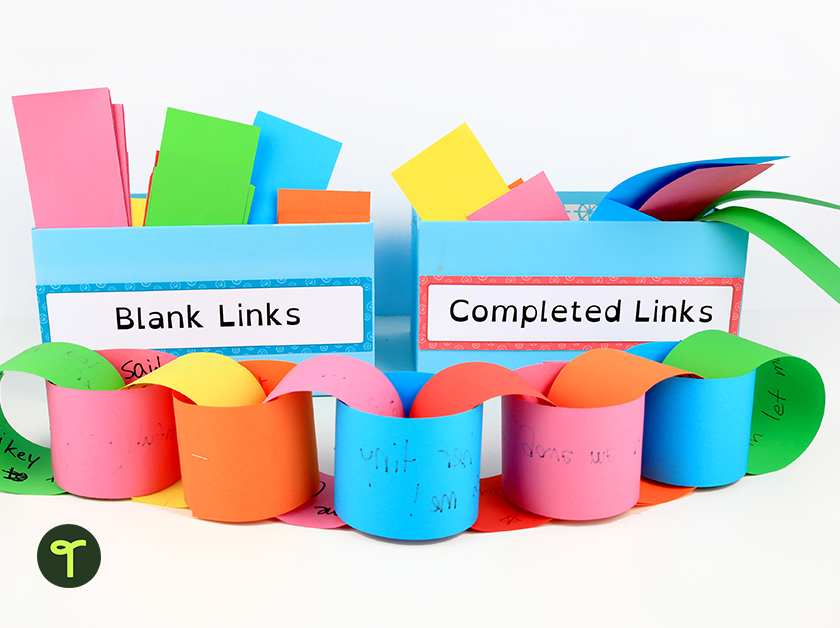
Teach Students How to React
As much as we would like, we may not be able to completely eradicate bullying. But we can help our students feel more empowered when they face cruelty from a classmate or a mate, and that could actually help cut down on the rates of bullying incidents in your school.
It turns out that when kids are equipped with strategies to respond to bullying, children feel more confident and in control of their situation, and children who know how to respond effectively are less likely to be targeted. What’s more, simply educating our students about bullying can raise awareness and promote a culture of empathy and respect in your class, helping to prevent bullying from occurring in the first place.
Set time aside for a social and emotional lesson on what to do when you feel that you are being bullied.
This free printable resilience strategies poster is a must-have for the classroom as it teaches students each of the steps to take when they feel that they are being bullied!
Take the PACER Anti-Bullying Pledge as a Class
PACER’s anti-bullying pledge calls on kids to speak up when they see bullying, reach out for help and be a good friend when someone is being bullied. Their simple online pledge includes a printable certificate you can end home with students as a reminder of the promise they made.
Practice Mindful Communication
Being empathetic, tactful, thoughtful, and compassionate when communicating is a learned skill, and it can be challenging forsome younger children to understand, particularly when they are still developing social skills, their vocabulary and interpersonal skills like empathy. They’re also finding their own unique voices.
Working on mindful communication in your classroom helps cut down on bullying, as this practice is all about being conscious of what you say and how you say it!
Teach students the THINK strategy of mindful communication, which asks students five key questions to filter out inappropriate comments:
“Before I speak, write or type, I think. Is this…
True?
Helpful?
Important?
Necessary?
Kind?”
Print a THINK strategy poster for your classroom here.
Try a Bruised Apple Activity
This powerful lesson definitely deserves a place in your plans for regular learning experiences about bullying. By using a tangible symbol (two apples that look the same on the outside but, when cut in half reveal the “hurt” inside), students can easily understand the impact of unkind words.
For this anti-bullying activity, you’ll need two apples that look similar. Take one apple and bang it up — you can toss it on the ground a few times — but make sure you don’t do any outside damage!

During your lesson, show students two apples that look the same and ask them if either one is damaged (based on appearance only). Toss your damaged apple on the ground and tell the students (and the apple!) that this is the bad apple. Praise the other apple, and encourage the students to do the same.
Next, slice each “perfect” apple down the center, and expose the cross-sections. The undamaged apple will be perfect, but the dropped apple will be bruised on the inside, underneath the skin. Use this visual to help students understand that unkind words and actions can and will cause lasting emotional damage, which will remain unseen from the outside.

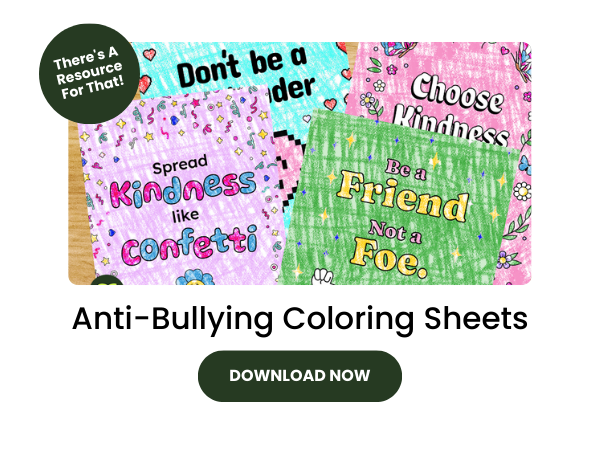
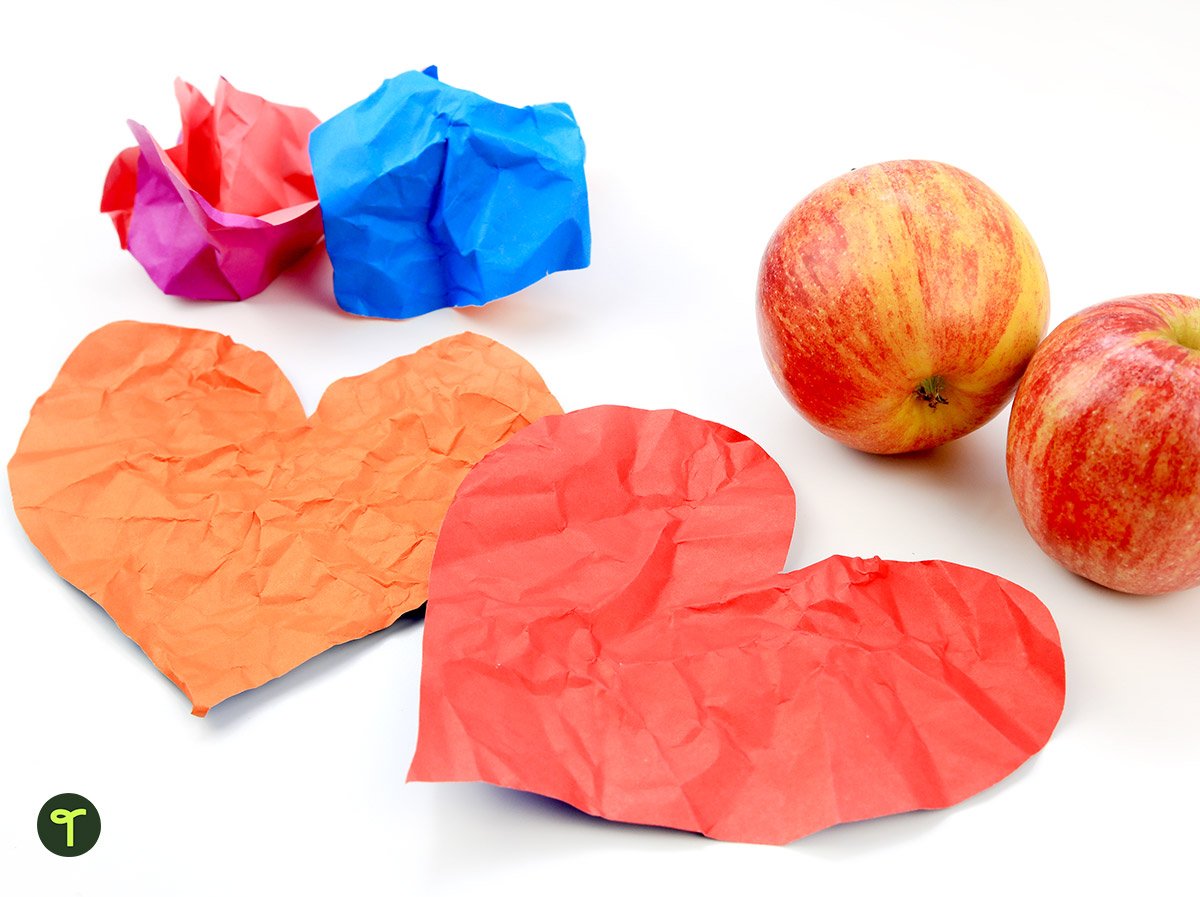
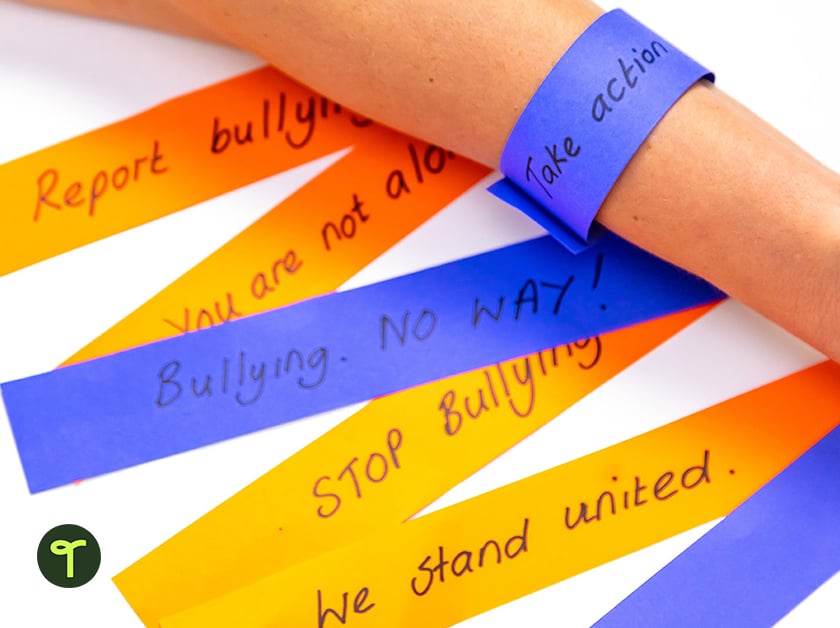

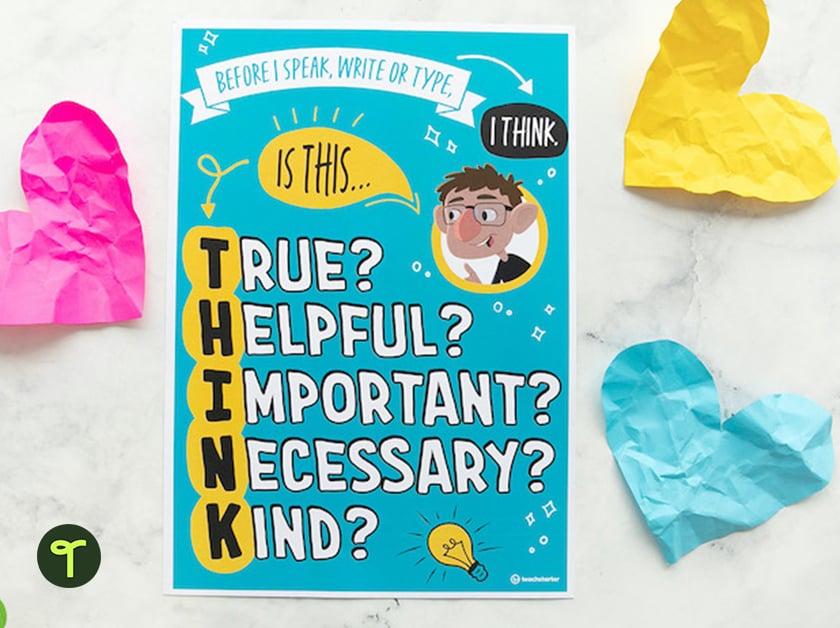






Comments